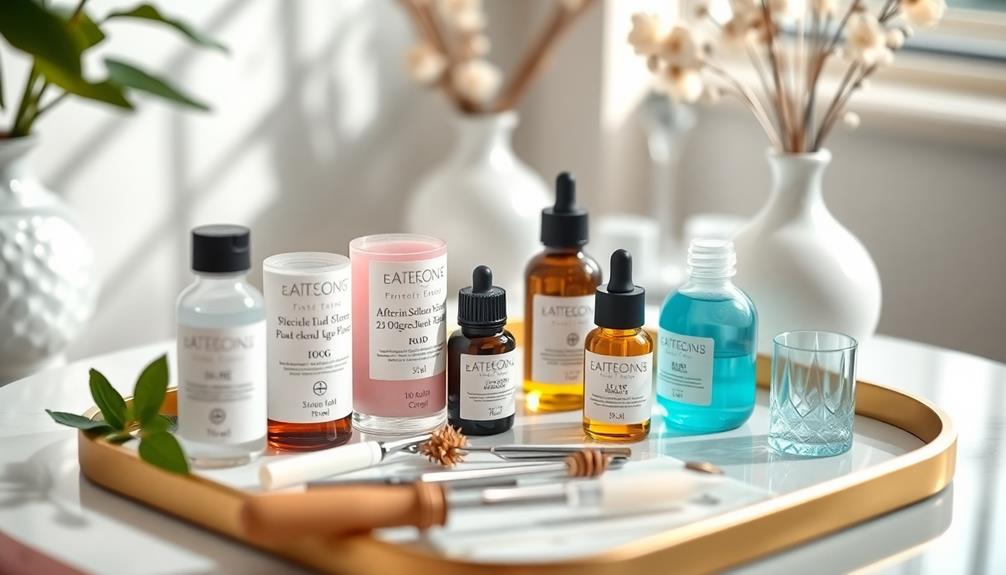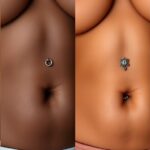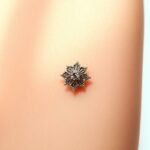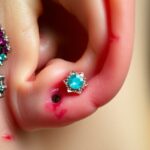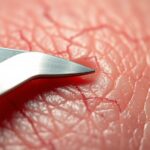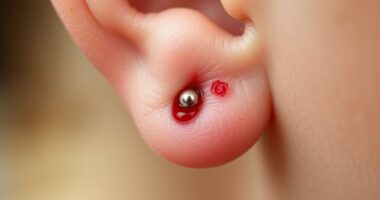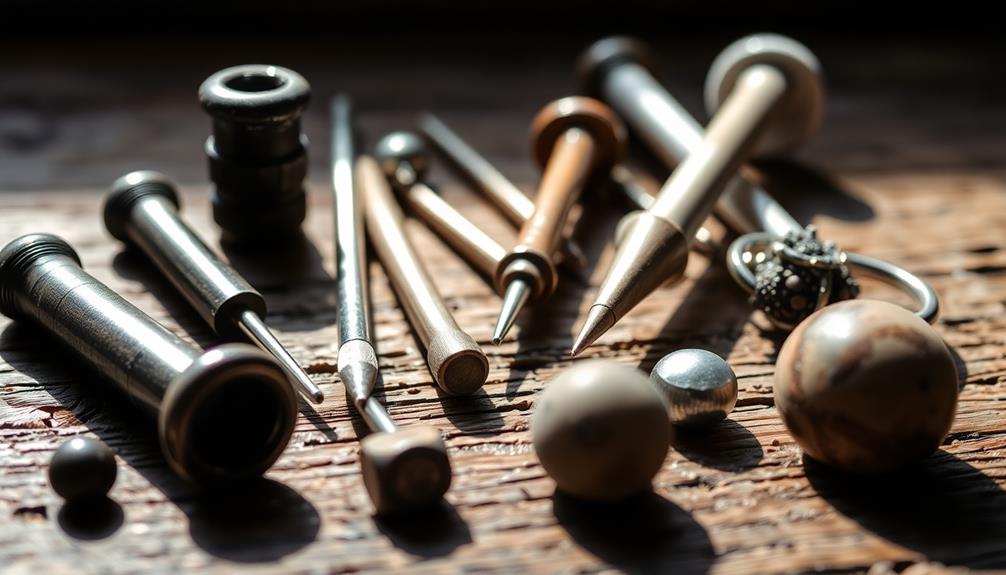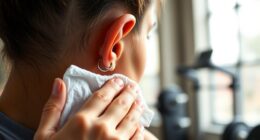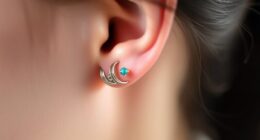Understanding anatomy is vital for successful piercings. Your tissue thickness and unique features influence the placement and healing process. For instance, areas like the navel and nipple may need specialized techniques due to their anatomical characteristics. A professional piercer assesses your individual anatomy to minimize risks and complications, ensuring the right jewelry and technique are used. This knowledge helps avoid issues like excessive bleeding or infections, promoting quicker healing. With the right approach, you can not only enjoy your new piercing but also feel confident about its success. There's plenty more to discover about making informed choices for your piercing journey.
Key Takeaways
- Individual anatomical features, such as tissue thickness and location, significantly impact the success and healing of piercings.
- Professional evaluations ensure anatomical compatibility, minimizing risks associated with specific piercing types.
- Different body areas require tailored techniques and jewelry selections based on unique anatomical characteristics.
- Understanding anatomy helps prevent complications, such as excessive bleeding and infection, during and after the piercing process.
- Cultural perspectives and personal aesthetics linked to piercings reflect diverse meanings, highlighting the importance of anatomy in self-expression.
Importance of Anatomy in Piercings

Understanding anatomy is vital when it comes to piercings. Your individual anatomical features, like tissue thickness and defined ridges, markedly impact the success of any piercing. Proper anatomy plays an essential role in determining whether a specific location can support a piercing without complications.
For instance, certain areas like the nipple and navel demand particular anatomical characteristics, such as protrusion and defined upper ridges, to guarantee a successful piercing and minimize healing issues.
When you undergo a professional assessment of your anatomy, it can reveal potential risks associated with different piercings. This evaluation allows for tailored advice on jewelry selection, enhancing your comfort and promoting effective healing.
Recognizing the significance of anatomical compatibility is key; not every body part is suitable for piercing, and individual variations can greatly influence outcomes.
Types of Body Piercings

Body piercings come in various forms, each with unique characteristics and considerations. Understanding the specific anatomy involved is vital for achieving successful placements. Here are three common types of body piercings you might consider:
- Ear Piercings: These can include lobe and cartilage piercings, each requiring different techniques. Cartilage, for example, is rigid and may lead to complications if not handled properly by a professional piercer.
- Nose and Lip Piercings: These facial piercings often heal within 4 to 8 weeks, but they require careful attention to the anatomy of the nasal and oral regions to avoid infection and guarantee proper placement.
- Genital Piercings: These involve complex anatomical structures and come with higher risk factors. A thorough understanding of the anatomy is essential for a safe and successful procedure.
Each type of piercing has its own healing time, generally ranging from 4 to 12 weeks, influenced by the unique anatomical features of the site.
Always consult a professional piercer who understands these nuances for the best results.
Health and Safety Measures
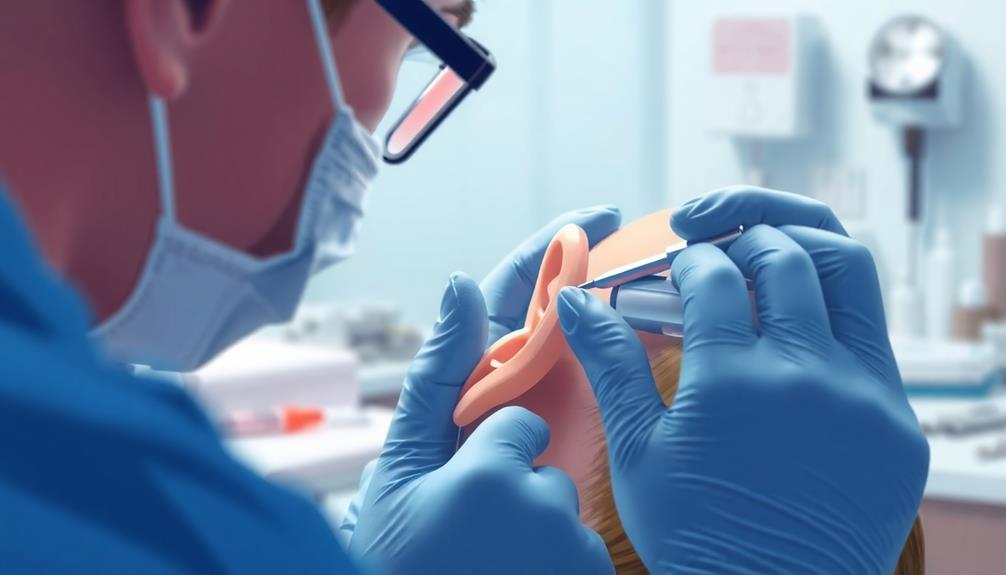
Safety should always be a top priority when it comes to body piercings. Implementing effective health and safety measures is essential to minimize complications and guarantee a successful outcome.
Start by confirming that all piercing equipment is properly sterilized, ideally through autoclaving, and use single-use items whenever possible to reduce the risk of infection and transmission of bloodborne pathogens. Additionally, maintaining good oral health with essential oils for toothache relief can aid in overall hygiene, which is fundamental for healing.
Understanding the anatomy of the piercing site is necessary. A professional piercer should evaluate your individual anatomy to confirm the chosen site is safe and suitable, which helps prevent excessive bleeding and complications. They'll also consider vascular structures and nerve endings to avoid unnecessary harm.
After your piercing, keep an eye out for signs of infection, like redness, swelling, or discharge. Healing can take anywhere from 4 to 12 weeks, so regular monitoring is key.
Additionally, choose hypoallergenic jewelry materials, such as titanium or surgical stainless steel, to prevent allergic reactions. By adhering to these health and safety measures, you can greatly reduce the risk of migration and other complications, ultimately leading to a more enjoyable piercing experience.
Cultural Perspectives on Piercing

Anatomy plays a key role in safely executing piercings, but the cultural significance behind these practices adds another layer of depth to the experience. Body piercing isn't just about aesthetics; it's often intertwined with identity, heritage, and community values. As you explore different cultures, you'll discover unique perspectives on piercing that highlight its importance.
- In many indigenous tribes, piercings serve as rites of passage, marking significant life milestones.
- African cultures may use ear stretching to signify maturity and beauty, while Asian traditions often embrace nose piercings as traditional adornments.
- Contemporary trends influenced by social media can lead to an increased acceptance of various styles, yet some societies still hold stigma against piercings.
Understanding these cultural nuances enriches your appreciation of piercing anatomy. Each piercing can carry profound meanings, linking individuals to their roots or expressing personal beliefs.
As you consider getting a piercing, it's essential to acknowledge its cultural significance and respect the traditions that shape these practices. Embracing this awareness can enhance your experience, allowing you to connect more deeply with the art of body modification.
Psychological Effects of Piercings

When you get a piercing, it can be a powerful way to express your identity and showcase your personal style.
Depending on your environment and the cultural acceptance around you, this choice might either boost your self-esteem or lead to feelings of anxiety.
Understanding these psychological effects helps you navigate your motivations and the reactions you might encounter.
Self-Expression and Identity
Body piercings can be a vibrant expression of who you are, allowing you to showcase your individuality and personal style. When you choose a piercing, you're not just selecting jewelry; you're making a statement about your identity.
Here are three ways piercings can enhance your self-expression:
- Personal Aesthetics: Whether you opt for a subtle stud or a bold hoop, the style of your piercing reflects your unique taste and values.
- Cultural Connection: Many choose piercings based on cultural or societal trends, helping you feel a sense of belonging within specific communities.
- Empowerment: Getting pierced can empower you, as it allows you to reclaim autonomy over your body. With the right piercer, you can guarantee the ideal anatomy is respected, making the healing of your piercing a fulfilling experience.
As you embrace your piercings, you're likely to notice a boost in self-esteem and body image.
This newfound confidence comes from feeling authentic and true to yourself, reinforcing the powerful role that body piercings play in shaping your identity.
Social Acceptance Variations
Social acceptance of piercings can greatly impact your experience and feelings about self-expression. In some cultures, piercings are celebrated as symbols of beauty and identity. In others, they're viewed as rebellious or inappropriate, creating a long-standing divide. This acceptance can affect your self-esteem and social interactions, especially in professional settings.
While some environments embrace individuality, others might see visible piercings as a foreign object that distracts from professionalism. You might feel supported in certain circles, like punk or goth communities, where body piercings foster a sense of belonging. However, in more conservative spaces, you may encounter stigma, leading to feelings of isolation or anxiety.
Here's a table illustrating the emotional landscape surrounding piercings:
| Acceptance Level | Positive Feelings | Negative Feelings |
|---|---|---|
| High | Confidence, Belonging | |
| Moderate | Acceptance, Curiosity | Judgment, Discomfort |
| Low | Stigma, Anxiety |
Understanding these variations can help you navigate your choices and the potential psychological effects of your piercings, ensuring you find the right tissue to support your self-expression.
Professional Evaluation and Recommendations
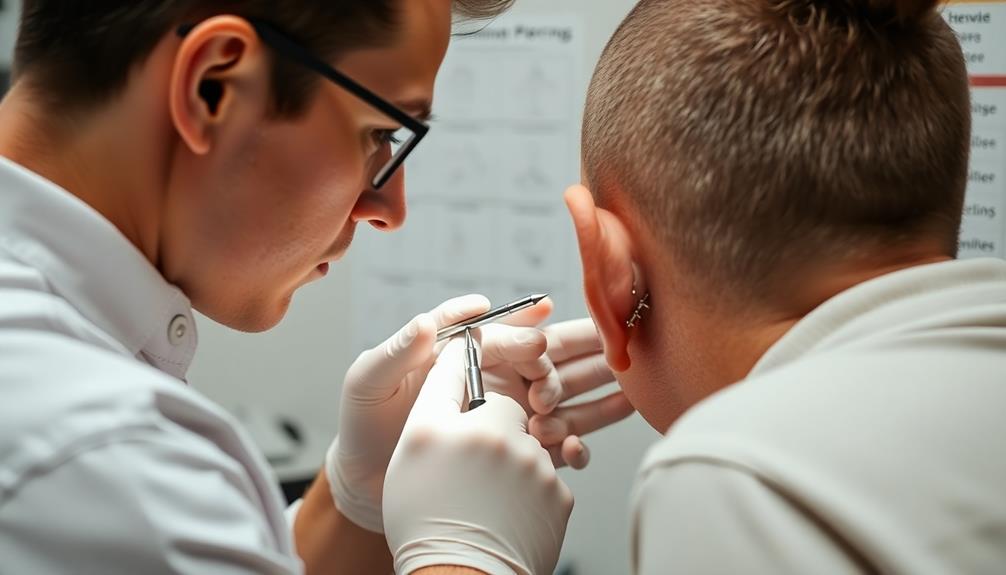
Regular professional evaluation is essential for anyone considering a piercing. This process helps you assess your individual anatomical features, guaranteeing the chosen location is suitable for the procedure and can support the jewelry.
Experienced piercers can identify potential complications arising from unique anatomy, such as blood vessel placement or tissue thickness, both of which impact healing and jewelry selection.
During your consultation, keep in mind these three key aspects:
- Anatomical Compatibility: A professional can evaluate your anatomy to guarantee that the piercing type you desire is safe and viable.
- Jewelry Selection: Based on your anatomy, piercers can recommend specific jewelry styles and materials that enhance comfort and reduce irritation or rejection.
- Personal Context: Bring items like glasses or earbuds to the consultation, as they provide context on how the piercing may impact your daily activities.
Frequently Asked Questions
What Does Anatomy Do With Piercings?
Anatomy affects piercings by determining where you can safely place them, how they'll heal, and what jewelry suits you best. Understanding your body's unique structure helps you avoid complications and guarantees a more comfortable experience.
How Does Ear Anatomy Affect Piercings?
So, you think any spot on your ear's fair game, huh? Well, your ear anatomy dictates piercing success. The shape, thickness, and position matter—ignore them, and you might end up with a painful, crooked disaster.
What Does Anatomy Dependent Mean for Piercings?
Anatomy-dependent means your unique physical features influence how a piercing functions and heals. Factors like tissue thickness and bone structure matter; they determine the best placement for jewelry and reduce the risk of complications.
What Piercings Do You Need the Right Anatomy For?
Did you know that nearly 30% of people experience complications with certain piercings? You need the right anatomy for navel, industrial, nipple, and surface piercings, as improper structures can lead to rejection or discomfort.
Conclusion
In the vibrant world of body art, understanding your anatomy is like having a map to treasure. Each curve and contour plays an essential role in achieving that perfect piercing. As you commence on this journey, remember to prioritize health and safety, respecting the cultural tapestry that surrounds piercing. Embrace the psychological transformation it brings, and always seek professional guidance. With knowledge and care, your piercing experience can shine like a jewel, celebrating your unique expression.


